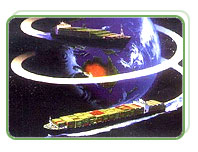 useful comments by Mr. Anton Zuidwijk
useful comments by Mr. Anton Zuidwijk
Dr. Kay Pysden published an article in the IFW-bulletin that Europe should have a firm stance on the Rotterdam Rules and finished with her opinion that these should be rejected. I agreed with many of her observations, but not with her conclusion that the RR should be rejected.
My comments:
Dr. Kay Pysden is totally right. But with due respect to her and other eminent lawyers who fiercely oppose the RR, there are a few things that they should responsibly evaluate. I am not a lawyer and very far from being an expert, but I dare to sum up some facts, which other better informed people should complete worldwide and not just between Europe and the USA as now is done:
1) Please study what Intermodal Transport did for the world economies after 1970 and how the costs of transportation were reduced. Take into account that Intermodal Transport could be put in practice in the USA, because it was created within their borders. In Europe, which until 2000 was still their main trading partners, more than 30 years of discussions were necessary to come to CMR, CIM-COTIF and CMNI. See ENO-TRANSPORTATION FOUNDATION´s reports on the efforts from 1997 till 2001 under the motto TOWARD IMPROVED INTERMODAL FREIGHT TRANSPORT BETWEEN EUROPE AND THE U.S.A. Please watch the results of the advance of Intermodal Transport and take into account the new map of world economies. Now studies should be made with a new motto: TOWARD IMPROVED WORLDWIDE INTERMODAL FREIGHT TRANSPORT.
2) Please read carefully how the container changed transportation contracts worldwide. See how legal problems became apparent and have a good look at all the efforts to come to new rules, 1963 UNIDROIT, 1969 Committee Marítime International in Tokio, 1970 “Rome Draft” of UNIDROIT/CMI. Finally in 1975 the first Rules that could be put in practice, ICC 298 Rules for Combined Transport. See what happened in UNCTAD Geneva from 1972 to 1980 to come to MULTIMODAL RULES and how after 8 years of discussions a Convention was created that was impossible to be put in practice, as studies of shipowners associations clearly showed.
3) Finally in 1991 UNCTAD-ICC Rules for Multimodal Transport documents, which still are the most used between developed countries, but could not penetrate in “developing countries”, who lack clear national laws, which still date from around 1900 and in which you still can read that the owner of the horses and carts must leave them to the “owner of the cargo” in case of claims. But also in some of those countries claims are paid with values of 3 times that of the damaged cargo.
4) Now we have 3 Conventions on Maritime Transport, which should be described here, with all their problems and 1 Multimodal Convention that cannot be put in practice.
5) Then see the influence of Electronic Commerce, which also created new legal problems. Read everything that happened after the UN General Assembly of 1996, when the Model Law on Electronic Commerce was announced. Read the recommendation of the Secretary General of the UN to overcome the great amount of legal grey areas that still exist and what CMI and UNCITRAL did from that date till this moment. See how everybody was involved in the drafting of the new convention and how everybody was able to bring his ideas forward.
6) See how we came to this date with RR.
7) At this point put the question: Do you believe that it is important to have fluent Multimodal Transport worldwide, also in Africa, Asia, Australia and South America ???
8) Take into account that 80% of all Multimodal Transport has a “sea-leg”
9) What is best: Start with RR as they are, clarify during some years the problems that will surely turn up and improve things as we go, or start all over again and repeat everything that was done since UNIDROIT 1963???
By Anton Zuidwijk www.antonioz.com.ar
